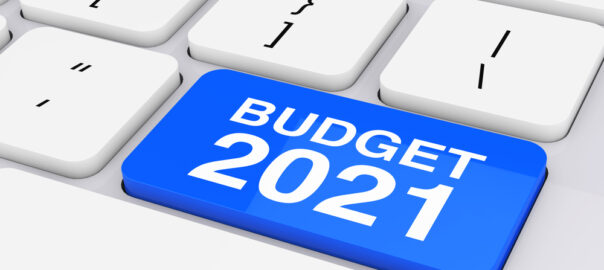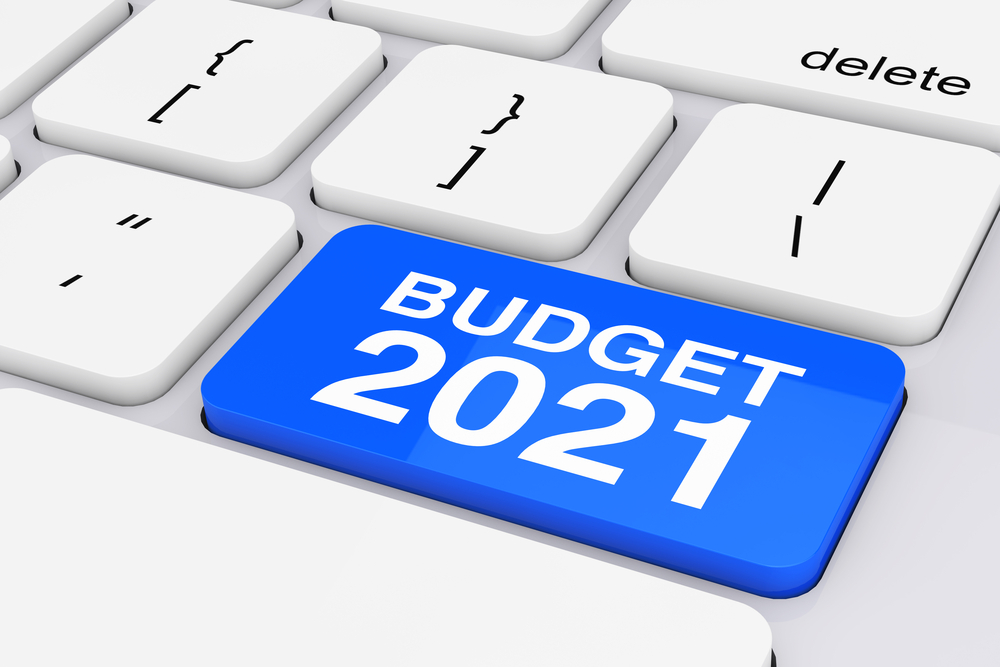
2021 Budget Summary
Last night, Treasurer Josh Frydenberg handed down the 2021-2022 Australian Budget, packed with various fiscal stimulus measures designed to help drive economic growth and push towards full employment. Following on from the massive $290 billion in stimulus measures last year in response to the COVID-19 pandemic, the Australian economy has recovered strongly, set to return to pre-pandemic levels nine months earlier than anticipated in October’s budget and with official GDP growth forecasts raised from 3.50% to 4.25%. This, in conjunction with a surge in the iron ore price to over $US200/tonne, has seen the projected deficit fall from $213.7 billion in October’s Budget to $161.0 billion in the current Budget.
 The key take-outs from this year’s Budget include:
The key take-outs from this year’s Budget include:
- Amendments to superannuation contribution rules, including extending the age members can add funds to super without needing to meet the work test from age 67 to 74 for Salary Sacrifice and Non-Concessional Contributions and lowering the minimum age requirement to make Downsizer Contributions from 65 to 60.
- More assistance for first home buyers, including an increase to the maximum amount of voluntary contributions under the First Home Super Saver Scheme that can be released from $30,000 to $50,000.
- An extension of previous initiatives to spur business investment and spending, including temporary full expensing of investment, temporary tax loss offsets against previous years, and a series of tax concessions for small to medium businesses.
- An extension of the Low and Middle Income Tax Offset (LMITO) to cover the next financial year.
- Reform to the age care industry, with an estimated $17.7 billion investment over five years following on from the findings of the Royal Commission into Aged Care Quality and Safety.
- An additional $15.2 billion added to the $110 billion decade-long infrastructure pipeline, designed to support an additional 30,000 jobs.
- More spending on child-care, disability, mental health and women’s economic security.
JBS Views & Planning Opportunities
We feel the some of the changes in the budget helps reiterate the importance of obtaining ongoing advice and continuing to review your situation to ensure that you are structured appropriately and are positioned well for the future. Particularly with changes to super contributions for those between 67 and 74 not having to meet the work test and the downsizer contribution age dropping.
On a positive note, the changes to superannuation are all very welcome, providing certainty to pre-retirement and retirement planning strategies.
As in the past please remember all measures outlined in this newsletter are proposals only, each of the proposals must still pass Parliament before they’re legislated.
Superannuation Changes
Removal of the Work Test – from 1 July 2022
Under the current rules, members aged between 67 and 74 looking to make Salary Sacrifice or Non-Concessional Contributions to super will need to meet the work test, meaning they will need to be gainfully employed for at least 40 hours during a 30-day period in a financial year when contributions are made.
The Government has announced that, from 1 July 2022, this requirement will be waived for members aged between 67 and 74 looking to make Salary Sacrifice or Non-Concessional Contributions to super, subject to total superannuation balance limits and contribution caps (the latter of which will be increasing from the 1st of July 2021). The work test will still be required for members aged between 67 and 74 looking to make Personal Concessional Contributions.
Downsizer Contributions
Under the current rules, members aged over 65 who sell their home that they have owned for at least 10 years are able to use the sale proceeds to make a one-off after-tax “Downsizer Contribution” of up to $300,000 per member into super, without counting towards the member’s Non-Concessional Contribution cap.
The Government has announced that it intends to lower the minimum age limit to make Downsizer Contributions from age 65 to 60. The requirement for members to have owned their home for at least 10 years will remain, however.
Increasing Releasable Amount Under FHSSS
Under the current rules, members can elect to have a maximum of $15,000 per financial year of their voluntary contributions plus a deemed earnings amount (to a total amount of $30,000 across all years) released from super for the purpose of purchasing their first home under the First Home Super Saver Scheme (FHSSS).
The Government has announced that it will increase the maximum total releasable amount (across all years) under this scheme from $30,000 to $50,000. The maximum annual voluntary contribution amount has not increased from its existing $15,000 limit, however.
Relaxing Residency Requirements
Under the current rules, SMSF trustees living overseas who intend to return to Australia at some stage can be away for a period of up to two years in order for the fund to still meet the central management and control test.
The Government has announced it will extend the central management and control test from two years to five years, whilst also removing the active member test.
JBS View:
We welcome these changes to the superannuation contribution rules, especially when it comes to avenues for building funds for retirement. The removal of the work test will also allow for pathways to re-contribution strategies, and the lowering of the downsizer contribution limit will allow for greater flexibility with downsizing. However, to make personal concessional contributions, the work test remains.
Tax Changes
Extending Low and Middle Income Tax Offset
The Low and Middle Income Tax Offset (LMITO) is an existing tax offset for individuals with taxable incomes of up to $126,000 that was due to be removed at the end of the current financial year. Below is a summary of the reductions in tax forgiven taxable income levels:
| FY22 Taxable Income | Low and Middle Income Tax Offset |
| $37,000 or less | $255 |
| Between $37,001 and $48,000 | $255 plus 7.5 cents for every dollar above $37,000, up to a maximum of $1,080 |
| Between $48,001 and $90,000 | $1,080 |
| Between $90,001 and $126,000 | $1,080 minus 3 cents for every dollar of the amount above $90,000 |
The government has announced that it will extend this offset until the end of FY22, meaning that instead of personal income tax increasing next financial year, it will stay the same when compared with the current financial year.
Extending Temporary Expensing for Businesses
As part of the 2020/21 Budget unveiled in October, it was announced that eligible businesses would be able to deduct the full cost of eligible capital assets first used or installed by 30 June 2022. This includes full expensing on the cost of new depreciable assets and the associated costs of improvement for businesses with an annual turnover of less than $5 billion, and full expensing on the cost of second-hand assets for businesses with an annual turnover of less than $50 million.
The Government has announced that it will extend this first use and installation time limit from 30 June 2022 to 30 June 2023.
Extending Temporary Loss Carry-Back for Businesses
As part of the 2020/21 Budget unveiled in October, it was announced that eligible businesses would temporarily be able to carry losses incurred from FY20, FY21 and FY22 backwards to profits from FY19 onwards, to receive a tax refund upon lodging their FY21 and FY22 tax returns.
The government has announced that it will extend this carry-back measure to include losses incurred in FY23 and apply them against profits in any year from FY19 onwards.
JBS View:
With any deduction, it is important to remember that it’s a deduction, not free money. While businesses can continue to get an immediate deduction for an asset purchase, business owners should not go out and spend the money unless the asset is required. The asset should be the focus with the extra benefit being the tax deduction.
Other Initiatives
Boost to Aged Care
In response to the Royal Commission into Aged Care Quality and Safety, the Government has committed to investing $17.7 billion in funding over the next five years to support the aged care sector. This includes funding for 80,000 additional home care packages over the next two financial years, as well as a three-phase implementation of funding measures designed to improve and simplify residential aged care services.
Increase in Child Care Subsidy – from 1 July 2022
Under the existing rules, those who use an approved childcare service or care for a child 13 or younger who is not attending secondary school are eligible to receive the Child Care Subsidy (CCS). The Government has announced it will increase the CCS rate by 30% for the second child and subsequent children aged five years and under in care, as well as removing the annual cap of $10,560 per child.
Additional Infrastructure Spending
The Government has committed an additional $15.2 billion to the current $110 billion 10-year transport infrastructure pipeline, which is estimated to support an additional 30,000 jobs on top of the existing 100,000 jobs on worksites already. This additional funding includes new projects such as the Melbourne Intermodal Terminal project and the Great Western Highway in New South Wales, as well as further funding for existing projects such as the Bruce Highway Upgrades in Queensland, the North-South Corridor in South Australia and the METRONET Rail in Western Australia.
JBS View:
JBS understands the impact Aged Care has on client’s financial situations and the importance of having flexibility on whether you have in-home care or via an Aged Care facility. We welcome the additional funding and home care packages, and the choices this provides to those utilising the services.
Child Care Subsidy measure aims to provide greater choice for parents seeking to work an extra day or two a week.
If you would like to discuss how any of these latest initiatives may impact you, please reach out and discuss your situation with the JBS Financial team.





